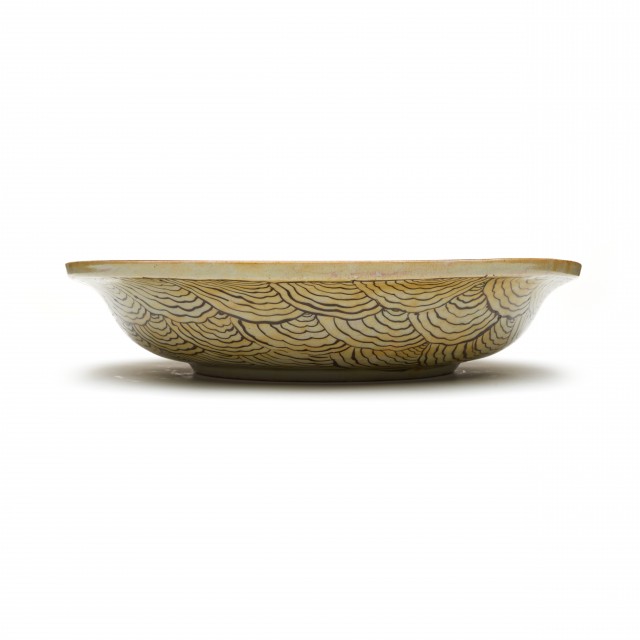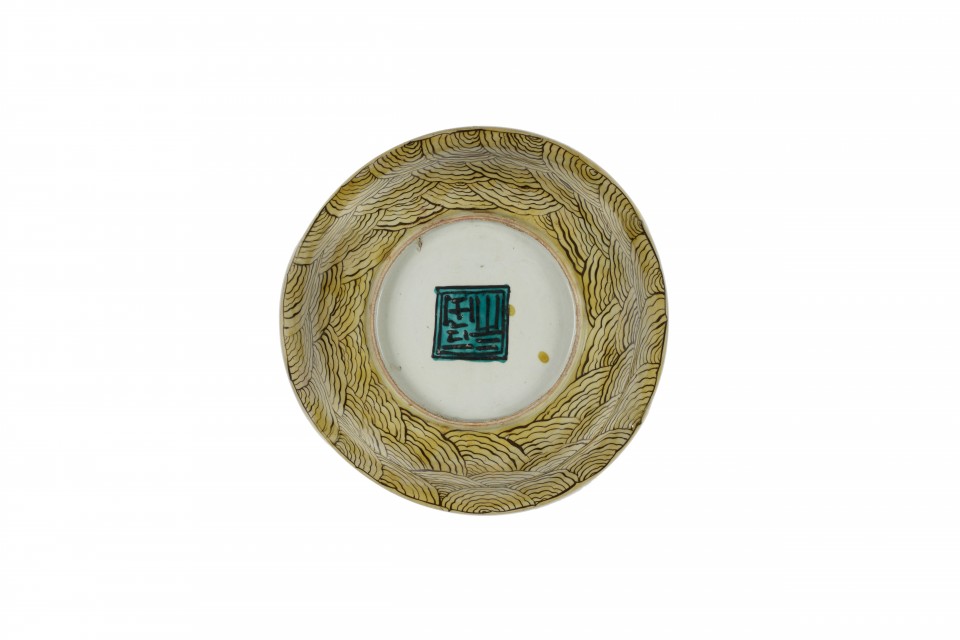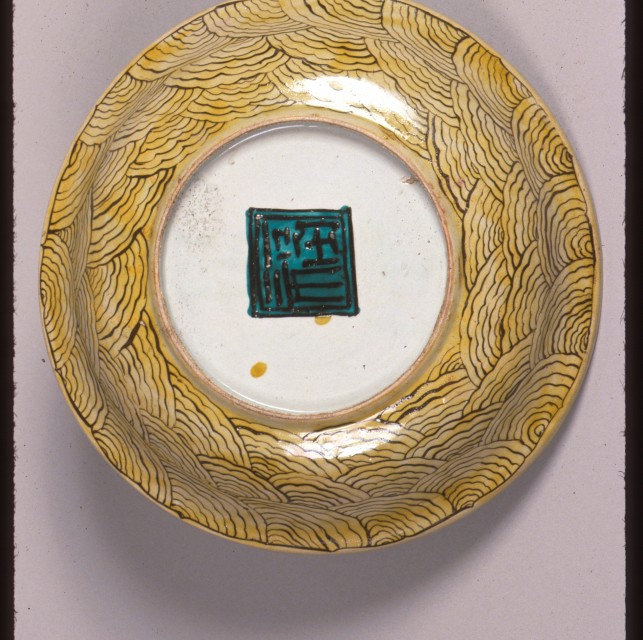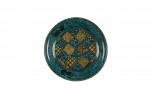
Shallow Bowl

Photography by Synthescape, Digital image © Asia Society

Photography by Synthescape, Digital image © Asia Society

Photography by Synthescape, Digital image © Asia Society

Photography by Susumu Wakisaka, Idemitsu Museum of Arts, Tokyo, Digital image © Asia Society
Shallow Bowl
Late 17th - early 18th century
Japan, Saga Prefecture
Porcelain painted with overglaze enamels (Arita ware, Kutani style)
H. 2 3/4 x Diam. 13 1/4 in. (7 x 33.7 cm)
Asia Society, New York: Mr. and Mrs. John D. Rockefeller 3rd Collection, 1979.247
Licensing inquiries
The checkered patterning in the center of this dish, as well as the abstract motifs decorating each square section, exemplifies the influence of contemporary textile design on ko-kutani ware. The color scheme of deep green and bright yellow, and the spectacular visual effect created by this color play, is one of the major characteristics of ko-kutani ware. Large dishes like this, decorated with various patterned motifs or picture-like images (probably inspired by sumptuous screen paintings), were used in banquets and seem to have been a staple of ko-kutani production. There is strong evidence to suggest that during the 17th century ko-kutani ware was manufactured at kilns in Arita, home also to other major porcelain industries, including enameled porcelain. At some point during the 19th century, production seems to have shifted to the Kaga Province (modern-day Ishikawa Prefecture), where the tradition continues today.




